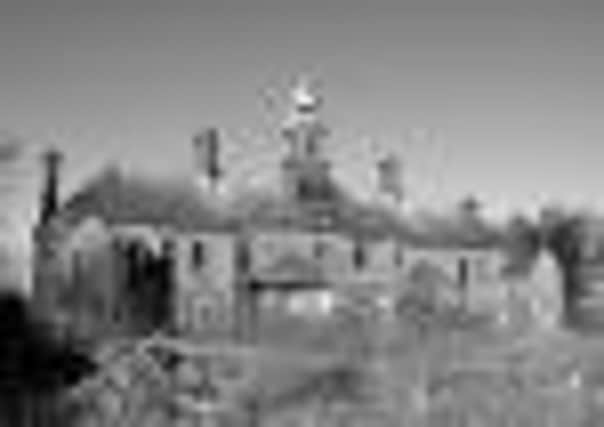Telling stories hidden behind walls of a Victorian asylum


Today Storthes Hall Hospital makes a forlorn picture. Closed in 1991 and now largely demolished, this huge site near Kirkburton outside Huddersfield has the air of a place that time has given up on.
While part of the site now houses student accommodation, for over two decades the main area has lain redundant. For the past seven years it has been the subject of fraught negotiations between Kirklees planners and a developer who wants to turn it into a retirement haven. This month the temperature went up a notch when planners said they wouldn’t allow the developer to back out of a requirement for affordable housing.
Advertisement
Hide AdAdvertisement
Hide AdThe arguments rumble on while the clock tower crumbles a little more. If it were safe to climb to its top, you would see the sprawling site of the former lunatic asylum which at its height it held over 3,000 people.
Built in the leafy grounds of a grand country house, considered ideal by the Victorians since it was some distance from any local community, when it opened in 1904, Storthes Hall was the fourth asylum to be built in the West Riding, the earlier ones at Wakefield, Wadsley and Menston having quickly reached capacity.
In the aftermath of the First World War, part of the hospital was devoted to treating soldiers suffering from shell shock. In need of continuing psychiatric care, many of them were still there more than 10 years later.
Most of the hospital, however, housed “pauper lunatics”, certified and detained – against their will if necessary – under the Lunacy Act of 1890.
Advertisement
Hide AdAdvertisement
Hide AdOne person familiar with just what went on behind the gates of Storthes Hall is Ann Littlewood, who started working at the hospital as a nursing assistant in 1968, eventually becoming senior nurse for mental health at Huddersfield Mental Health Directorate before retiring.
Ann has been on something of mission to record a history of the hospital and patient treatment has been the focus of much of her research. Right up to the 1950s, any patient considered a danger to themselves or others was dealt with by minimising activity. At the very least, this involved seating them on long benches with their backs to the wall and a table directly in front of them. Often it involved more.
Bolts, chains and manacles had been abolished by the Lunacy Act, but restraining forms of clothing including thick linen straitjackets that buttoned down the back and had extra long sleeves were still used. As was electro-convulsive therapy. Introduced in the 1930s, the treatment involved passing an electric current through the brain via electrodes to induce an epileptic-type fit. And in leucotomy and lobotomy procedures, doctors surgically entered the brain and cut away the white matter in the front lobes to destroy unhelpful nerve fibres.
Ann arrived at Storthes Hall at a time when mental health thinking was beginning to change radically and new drugs were appearing.
Advertisement
Hide AdAdvertisement
Hide Ad“They altered things a lot,” she says. “They made it possible for patients to work while in hospital and even live out of hospital.”
Lunatic asylums may now be a thing of the past but Ann is even-handed about their contribution.
“In the 1950s, yes, there was a higher chance of people being institutionalised,” she says.
“The downside of this was that people began not to be able to cope outside a hospital setting but the upside was that those who really did need it, got proper care.
Advertisement
Hide AdAdvertisement
Hide Ad“Medical staff struggled to find ways to cope with the situations they were presented with.
“Hindsight is a great thing, but all the way through, doctors and nurses gave what they thought was the best treatment for the illness.”
One of Ann Littlewood’s most poignant recollections takes us to the church of St Thomas at Thurstonland. Here more than 1,000 former patients of Storthes Hall are buried in unmarked graves. They are people who had “pauper burials” because they died without relatives. “Every large psychiatric hospital had something like this,” Ann sighs.
This summer a plaque was installed at Thurstonland Church bearing the words: “In loving memory of all who died at Storthes Hall Hospital and are laid to rest in unmarked graves within this churchyard.”
Advertisement
Hide AdAdvertisement
Hide AdSome might say it’s a long overdue memorial to some of those whose lives ended up taking an unexpected and perhaps wretched path.
Storthes Hall Remembered by Ann Littlewood is published by University of Huddersfield, priced £14,including postage. Visit www.stortheshallremembered. co.uk for details.